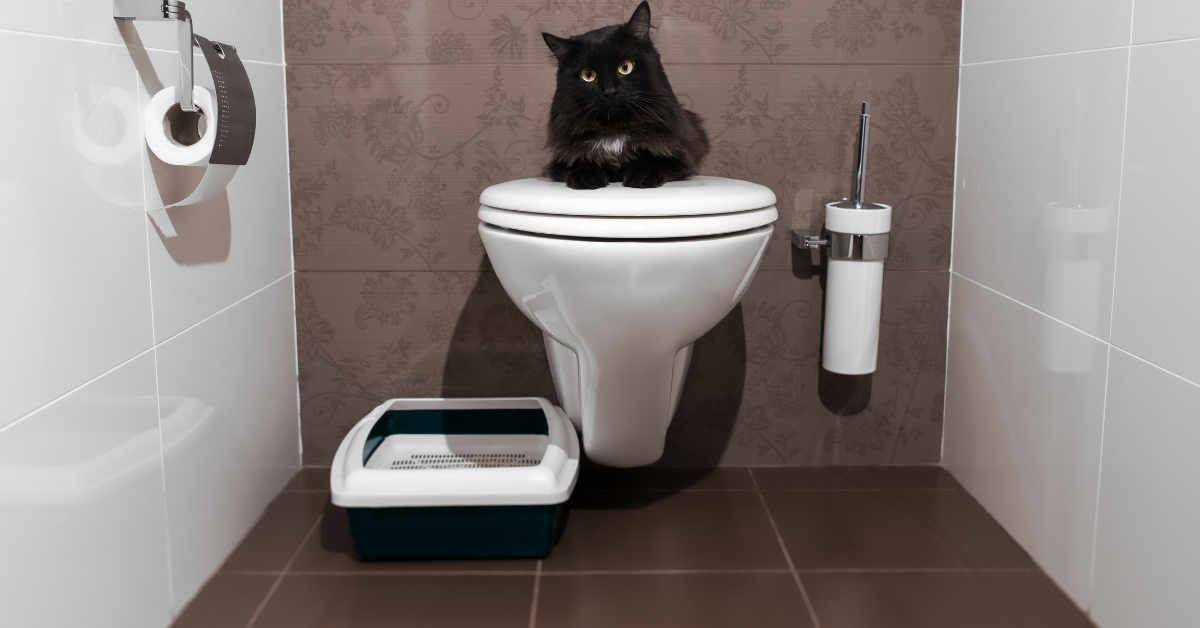The Dangers of Flushing Cat Poop Down Your Toilet - Tips for Better Handling
The Dangers of Flushing Cat Poop Down Your Toilet - Tips for Better Handling
Blog Article
Almost everyone will have their private idea involving How to Dispose of Cat Poop and Litter Without Plastic Bags.
Intro
As cat proprietors, it's important to bear in mind exactly how we get rid of our feline buddies' waste. While it might seem practical to purge cat poop down the bathroom, this method can have destructive consequences for both the environment and human health and wellness.
Alternatives to Flushing
Luckily, there are more secure and more responsible methods to take care of pet cat poop. Consider the following alternatives:
1. Scoop and Dispose in Trash
One of the most usual approach of dealing with feline poop is to scoop it right into an eco-friendly bag and throw it in the garbage. Make certain to make use of a committed litter scoop and deal with the waste quickly.
2. Use Biodegradable Litter
Select eco-friendly feline trash made from products such as corn or wheat. These trashes are eco-friendly and can be securely taken care of in the garbage.
3. Hide in the Yard
If you have a lawn, think about burying cat waste in a designated area away from veggie yards and water sources. Make certain to dig deep sufficient to stop contamination of groundwater.
4. Install a Pet Waste Disposal System
Buy a pet dog garbage disposal system particularly created for feline waste. These systems utilize enzymes to break down the waste, reducing odor and environmental impact.
Wellness Risks
Along with ecological issues, flushing cat waste can additionally posture health and wellness dangers to humans. Feline feces might consist of Toxoplasma gondii, a parasite that can create toxoplasmosis-- a possibly extreme health problem, particularly for expectant females and individuals with weakened body immune systems.
Ecological Impact
Flushing cat poop presents dangerous pathogens and bloodsuckers right into the supply of water, posing a significant danger to water ecosystems. These contaminants can negatively impact aquatic life and compromise water quality.
Final thought
Responsible pet dog possession prolongs beyond supplying food and shelter-- it additionally includes proper waste administration. By refraining from purging cat poop down the toilet and choosing different disposal techniques, we can decrease our environmental footprint and secure human wellness.
Why Can’t I Flush Cat Poop?
It Spreads a Parasite
Cats are frequently infected with a parasite called toxoplasma gondii. The parasite causes an infection called toxoplasmosis. It is usually harmless to cats. The parasite only uses cat poop as a host for its eggs. Otherwise, the cat’s immune system usually keeps the infection at low enough levels to maintain its own health. But it does not stop the develop of eggs. These eggs are tiny and surprisingly tough. They may survive for a year before they begin to grow. But that’s the problem.
Our wastewater system is not designed to deal with toxoplasmosis eggs. Instead, most eggs will flush from your toilet into sewers and wastewater management plants. After the sewage is treated for many other harmful things in it, it is typically released into local rivers, lakes, or oceans. Here, the toxoplasmosis eggs can find new hosts, including starfish, crabs, otters, and many other wildlife. For many, this is a significant risk to their health. Toxoplasmosis can also end up infecting water sources that are important for agriculture, which means our deer, pigs, and sheep can get infected too.
Is There Risk to Humans?
There can be a risk to human life from flushing cat poop down the toilet. If you do so, the parasites from your cat’s poop can end up in shellfish, game animals, or livestock. If this meat is then served raw or undercooked, the people who eat it can get sick.
In fact, according to the CDC, 40 million people in the United States are infected with toxoplasma gondii. They get it from exposure to infected seafood, or from some kind of cat poop contamination, like drinking from a stream that is contaminated or touching anything that has come into contact with cat poop. That includes just cleaning a cat litter box.
Most people who get infected with these parasites will not develop any symptoms. However, for pregnant women or for those with compromised immune systems, the parasite can cause severe health problems.
How to Handle Cat Poop
The best way to handle cat poop is actually to clean the box more often. The eggs that the parasite sheds will not become active until one to five days after the cat poops. That means that if you clean daily, you’re much less likely to come into direct contact with infectious eggs.
That said, always dispose of cat poop in the garbage and not down the toilet. Wash your hands before and after you clean the litter box, and bring the bag of poop right outside to your garbage bins.
https://trenchlesssolutionsusa.com/why-cant-i-flush-cat-poop/

Do you enjoy more info about Don’t flush cat feces down the toilet? Put a review directly below. We would be pleased to know your feelings about this blog post. In hopes that you visit us again later on. Are you aware of somebody who is interested by the subject? Why not promote it. Thanks for going through it.
Contact Report this page